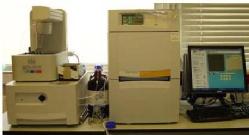Analytical Techniques
Here you can find out about some of the equipment I use to analyse my samples.
Drop Shape Analyzer
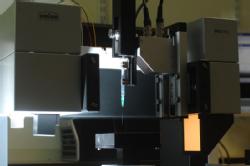 |
The Drop Shape Analyzer (DSA) can measure the static and dynamic contact angle between liquid and solid phases i.e. solid/liquid or liquid/liquid. These results reflect the adhesion and cohesion at the interface between the two different phases. Such measurements allow the wettability of particles at liquid interfaces to be investigated. It is also possible to conduct interfacial rheology measurements when using a droplet oscillator. |
Dynamic Light Scattering (DLS)
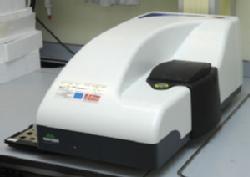 |
Using dynamic light scattering it is possible to investigate particle size and polydispersity of colloids in the range of 5-1000nm. It achieves this by using a laser and an autocorrelator to yield a diffusion coefficient for the particles, which is then used in the Stokes-Einstein equation. The machine also offers the capability of measuring the zeta-potential (the charge at the particle' slip boundary), conductance, and electrophoretic mobility of the particles. This can have ramifications for the colloidal stability of the particles, and how they interact with other colloidal entities. |
Helium Pycnometry
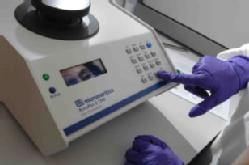 |
Helium Pycnometry is used to calculate a materials bulk (or skeletal) density by measuring the volume of He displaced by a material inside a chamber, against that of a highly accurate calibration standard (and by knowing the mass). If the sample contains relatively large pores then these are excluded from the volume-displacement calculation as they are filled with helium, hence the term skeletal density. |
Gel Permeation Chromatography (GPC)
|
|
GPC is a type of Size exclusion chromatography and is routinely used in polymer science for the determination of Mw and Mn, that is the weight and number average molecular weight of the polymer chains. From these measurements the polydispersity in chain size can be calculated. The size of a polymer chain can have dramatic effects on the polymer properties, such as viscosity or conductivity. |
Nitrogen and Helium Porosimetry
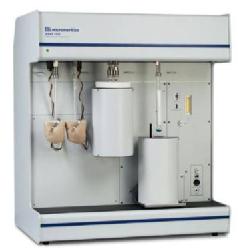 |
Porosimetry is commonly used to measure the surface area of a material, and the pore volume/size distribution of a sample. There are a vast number of models that can be applied to measurements to gain useful insights abosut the physical structure, the most frequently used being the langmuir, BET, and BJH models. The surface area of materials is important in industries such as catalysis and pharmaceuticals, while the pore size and distribution is important in filtration and optics for example. |
Scanning Electron Microscopy (SEM) with EDAX
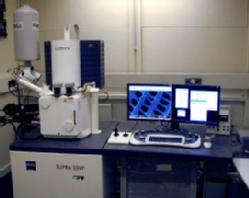 |
The scanning electron microscope backscatters a source of electrons from the surface of a sample to enable imaging of particles that are smaller than the wavelength of light. Information about the particle morphology and size can be inferred. The built in EDAX detector allows imaging and the analysis of elemental distribution over a large region of the sample surface. The microscope is also fitted with a cryo-stage to allow very soft samples to be frozen in liquid nitrogen prior to examination in order to preserve their structure. This is a very powerful tool in colloidal science as it allows you to directly image a sample down to about 10nm. |
Thermogravimetric Analysis (TGA)
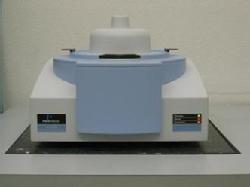 |
TGA monitors the change in sample mass with increasing temperature under various different gaseous atmospheres. Composite mass fractions can thus be determined. Many polymers will vapourise in the 100-400°C range, whereas inorganic materials such as silica can have melting points in excess of 1000°C.
|
Transmission Electron Microscopy (TEM) with EDAX
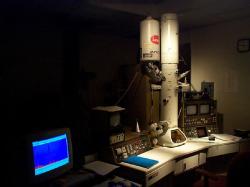 |
In TEM the sample is placed in between the electron source and the detector which allows hollow particles to be spotted due to the difference in density of the two phases. The resolution on the TEM is also greater than that of the SEM. The TEM is also fitted with an EDAX system, allowing determination of elemental composition over a very small region. |
UV-VIS Spectroscopy
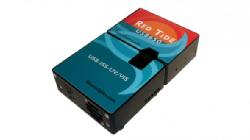 |
1H and 13C Nuclear Magnetic Resonance (NMR)
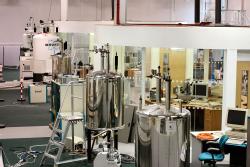 |
Thanks goes to Science City AM2 and Advantage West Midland for Providing Funding for a lot of the equipment mentioned here.

You can see what other facilities have been provided under the scheme by clicking here.

